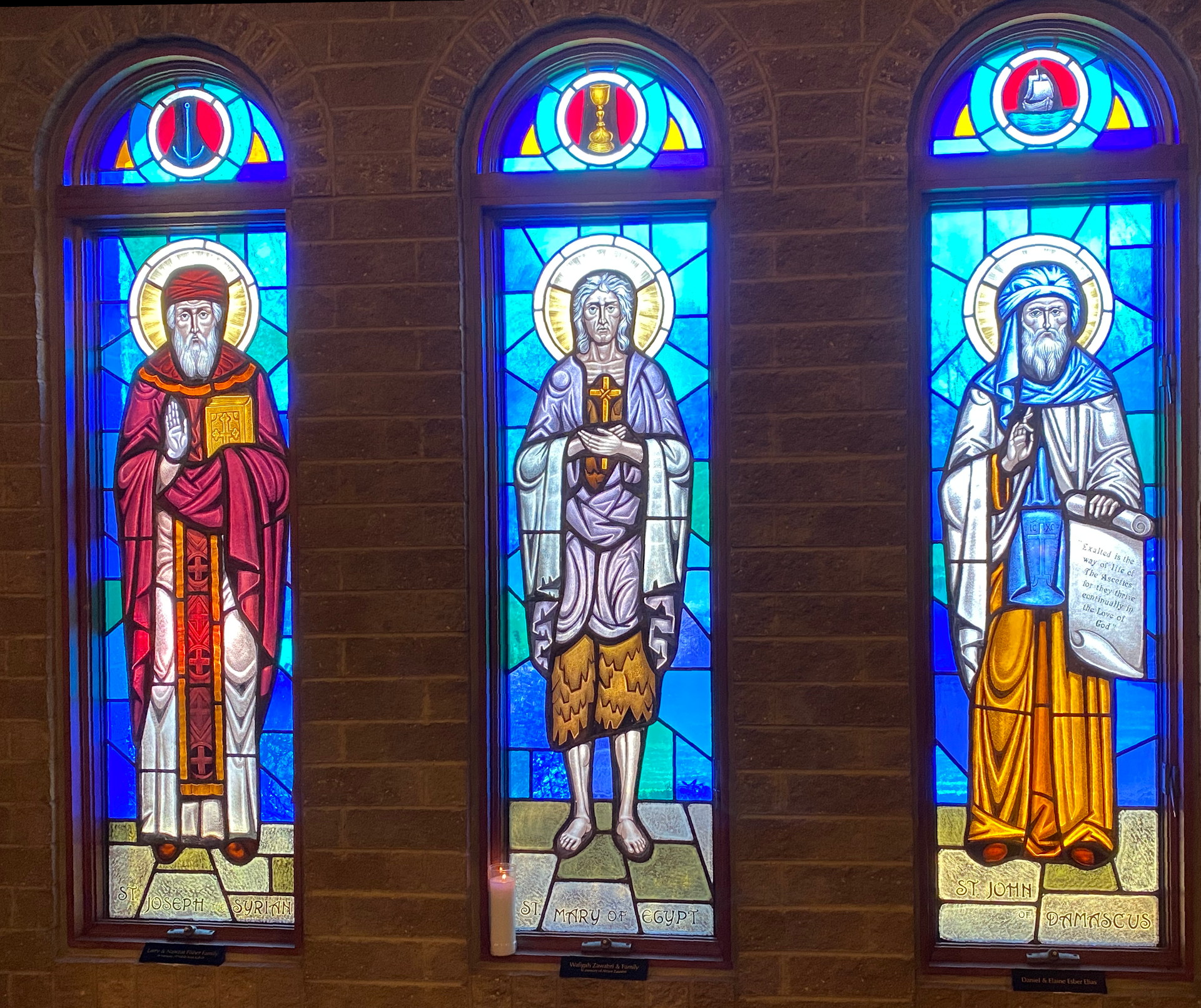The Saints
The Orthodox Church has a rich living tradition of recognizing the contributions of notable figures throughout human history that particularly exemplify walking in the Christian Way. While all Orthodox Christians are called to continually grow and develop in their faith throughout their lives, Saints in particular are those that go "above and beyond" demonstrating limits of what a human can spiritually attain in this life. The Saints are those who share the holiness of God.
Holiness or sainthood is a gift (charisma) given by God to man, through the Holy Spirit. Man's effort to become a participant in the life of divine holiness is indispensable, but sanctification itself is the work of the Holy Trinity, especially through the sanctifying power of Jesus Christ, who was incarnate, suffered crucifixion, and rose from the dead, in order to lead us to the life of holiness, through the communion with the Holy Spirit.
It is common for an Orthodox Church to be named after a particular saint that is held in special regard. This particular saint is said to be the patron saint of the Church. When in the nave of the church one will likely see an icon of the church's patron saint displayed on the left side of the iconostasis.
In Orthodoxy it is common to venerate a saint's particular icon by kissing the image. Veneration of icons is not meant as form of worship, but rather an action of respect, love, and/or consideration paid as one might pay to a picture held of dearly departed loved one. Icons serve as a strong reminder of the human history that our current day church is built upon and remembering the "cloud of witnesses" that await us in heaven.

St George

This great miracle worker and martyr lived in the latter part of the third century A.D. during Diocletian's rule of the Roman Empire. He originally came from the area of Cappadocia and was raised by very pious parents. When Diocletian started his persecutions against the Christians, St. George declared himself to be a Christian and thus denied the false idols. He suffered many tortures because of his belief but never considered renouncing it. The life of St. George is a prime example of the life that each Christian should follow to obtain salvation.
St. George the Great-martyr, was raised a Christian. His father was martyred for the faith. After his father's death, his mother took him to Palestine, where she had farmland. At a young age, he served in the Roman army under Emperor Diocletian and was commended many times for his service to the Empire. From the rule of the Emperor Decian until 284 A.D., when Diocletian became emperor, the Church went through a period of peace and prosperity. Christians obtained important positions in the government during that time; many built churches and schools and organized the authoritative structure of the Church. Diocletian gave many of his loyal officers political positions so that he could have the military strength of his Empire on his side. After Diocletian had suppressed the barbarian tribes which were attacking the Empire and after he had secured its borders, he began to concentrate on the Empire's internal affairs. Diocletian believed that a state religion could keep the empire united. Since paganism was the state religion, Diocletian focused his efforts toward the suppression of Christianity.
During the year 303 A.D., Diocletian summoned his aides to meet in Caesarea, a city of the Eastern Roman Empire. He held three general meetings with his aides, instructing them to persecute the Christians. St. George, since he had shown his excellence while serving in the army, was among these aides. Diocletian asked them to pledge their allegiance to this cause by making pagan sacrifices as proof of their loyalty. All the aides pledged their loyalty except St. George. He stood in front of Diocletian and admitted his belief in Christianity, telling the monarch of the Christian teachings and the Godliness of the crucified Nazarene. The emperor ordered this Christian to be taken to prison and that a boulder be placed on his chest as a form of torture. The next morning Diocletian ordered that the prisoner be brought before him for questioning. George stood steadfast and told Diocletain of his belief in the riches of the Kingdom of Heaven. The emperor then summoned the executioners to take the saint and have him bound to the rim of a wheelset with sharp spikes. Diocletian admired the courage of the saint and asked him to sacrifice to the gods to save himself. He refused Diocletian's request and welcomed the chance to martyr for Christ, as his father had done. After praying to God, he heard a voice from heaven say, "Do not fear, George, I am with you." With the help of Christ, the spiked wheel had no effect on St. George. When the saint appeared before Diocletian not only was he unharmed, but an angelic aura had settled about him. Suddenly, two officers of the Roman army, Anatolios, and Protoeon appeared before Diocletian with two thousand soldiers. They admitted their belief in Christ and Dioceletain had them all executed.
Troparion of St George (Tone 4): As deliverer of captives and defender of the poor, healer of the infirm, champion of kings, victorious Great Martyr George, intercede with Christ our God for our souls’ salvation.
Kontakion of St George (Tone 4): Thou wast cultivated by God and didst become a most wonderful cultivator of piety, and didst harvest for thyself the sheaves of virtue, for having sown in tears thou didst reap in joy and having withstood to death thou art garnered for Christ. By thy intercessions, O Saint, thou dost obtain for us all remission of our sins.
